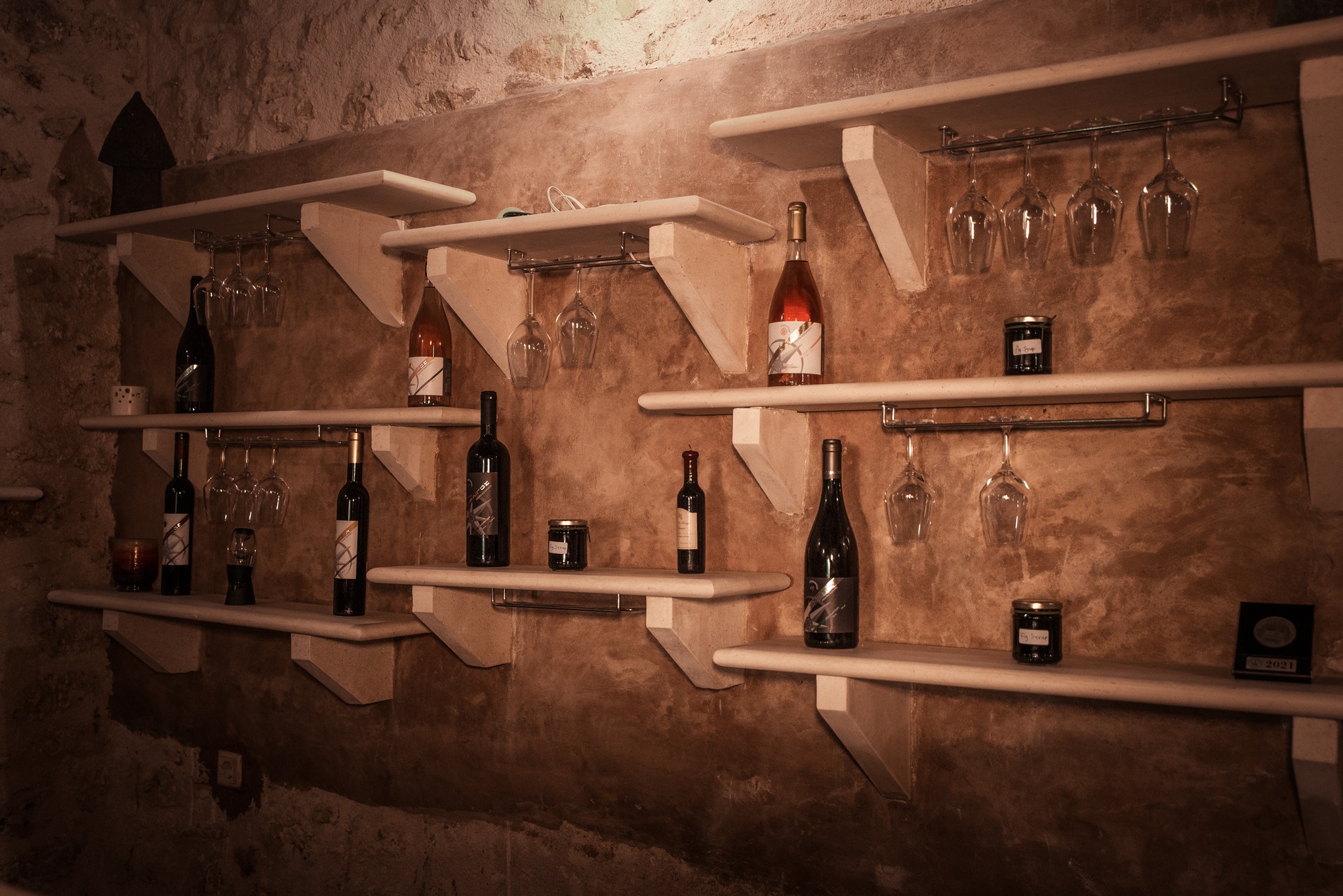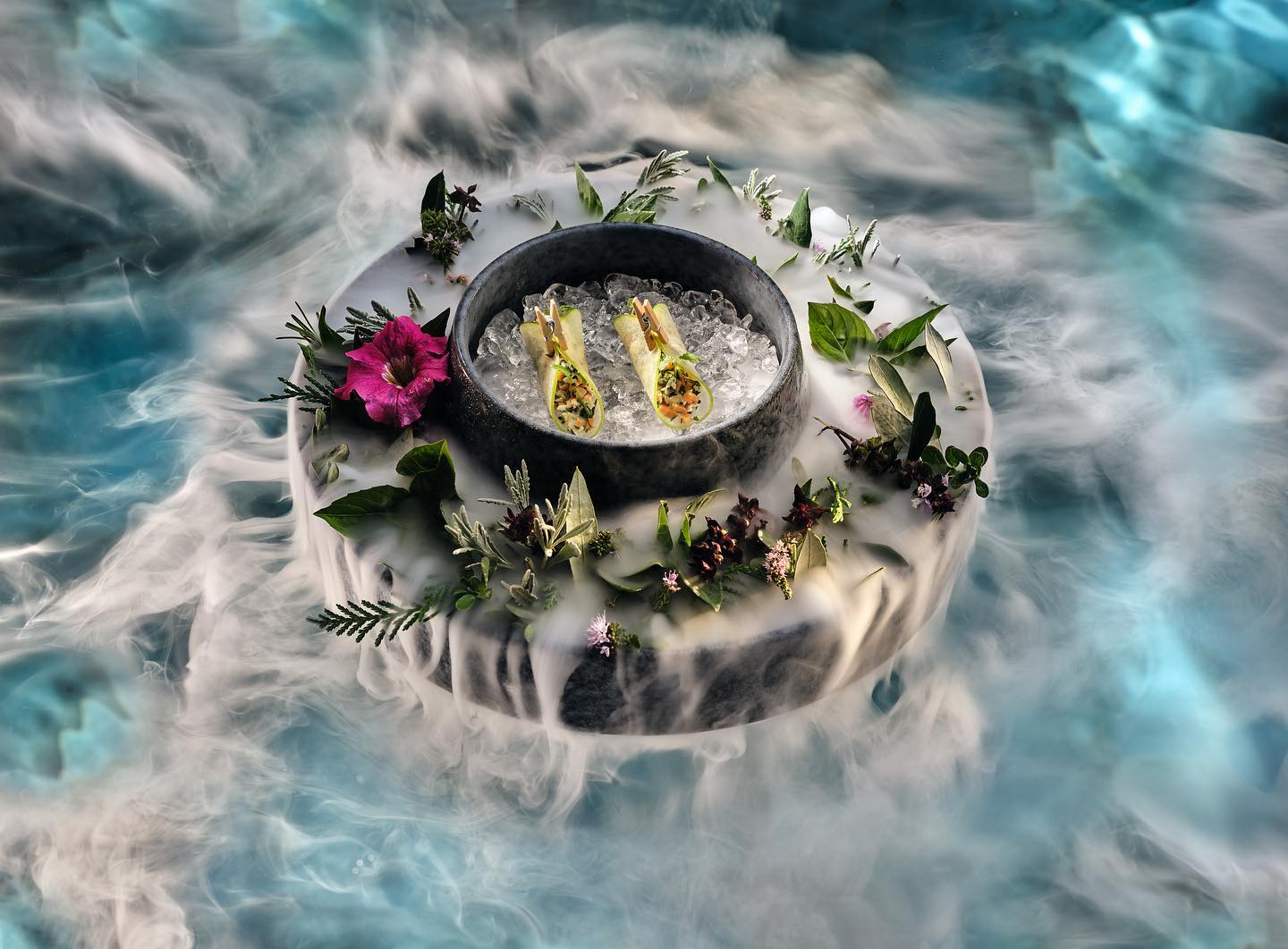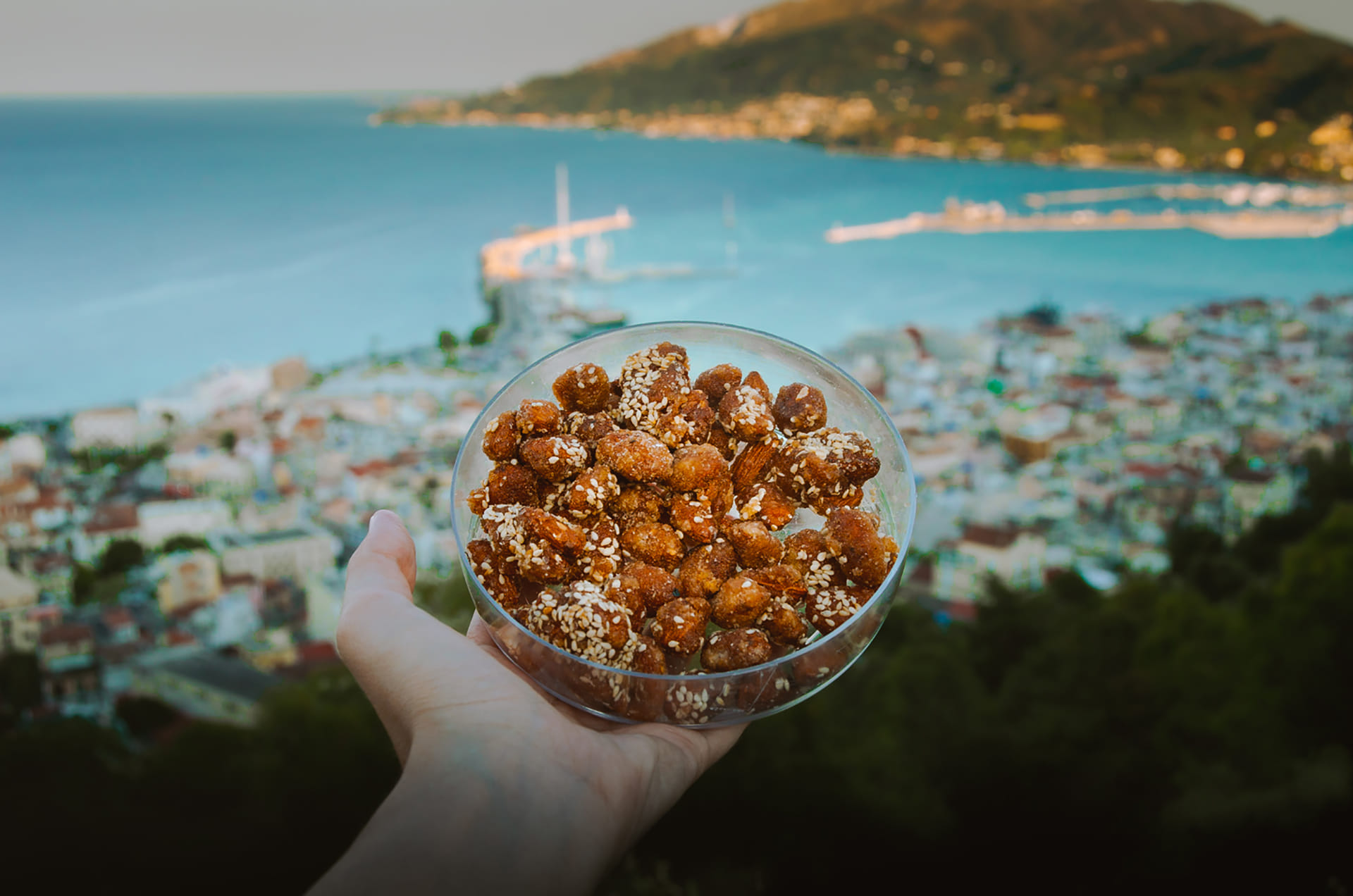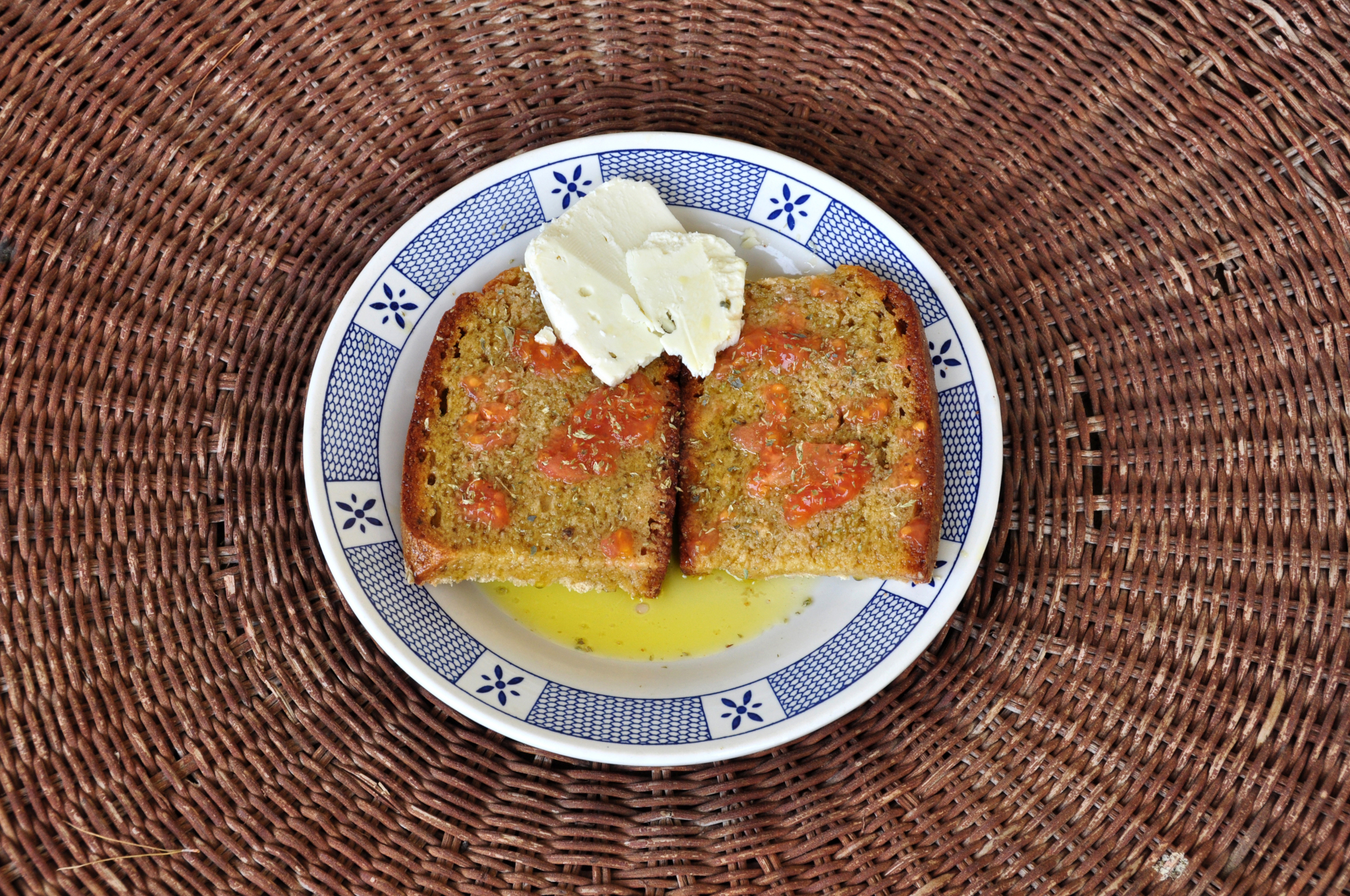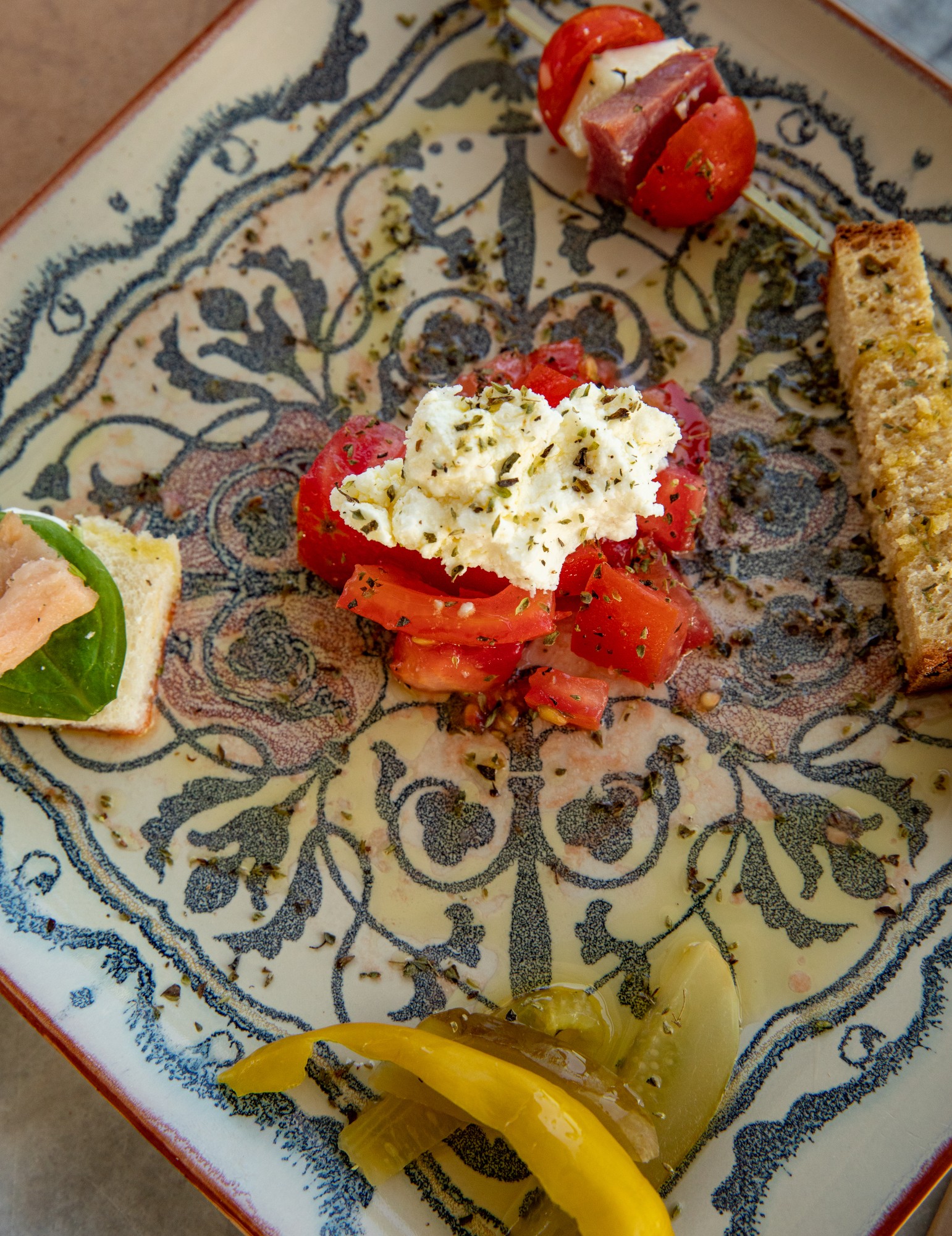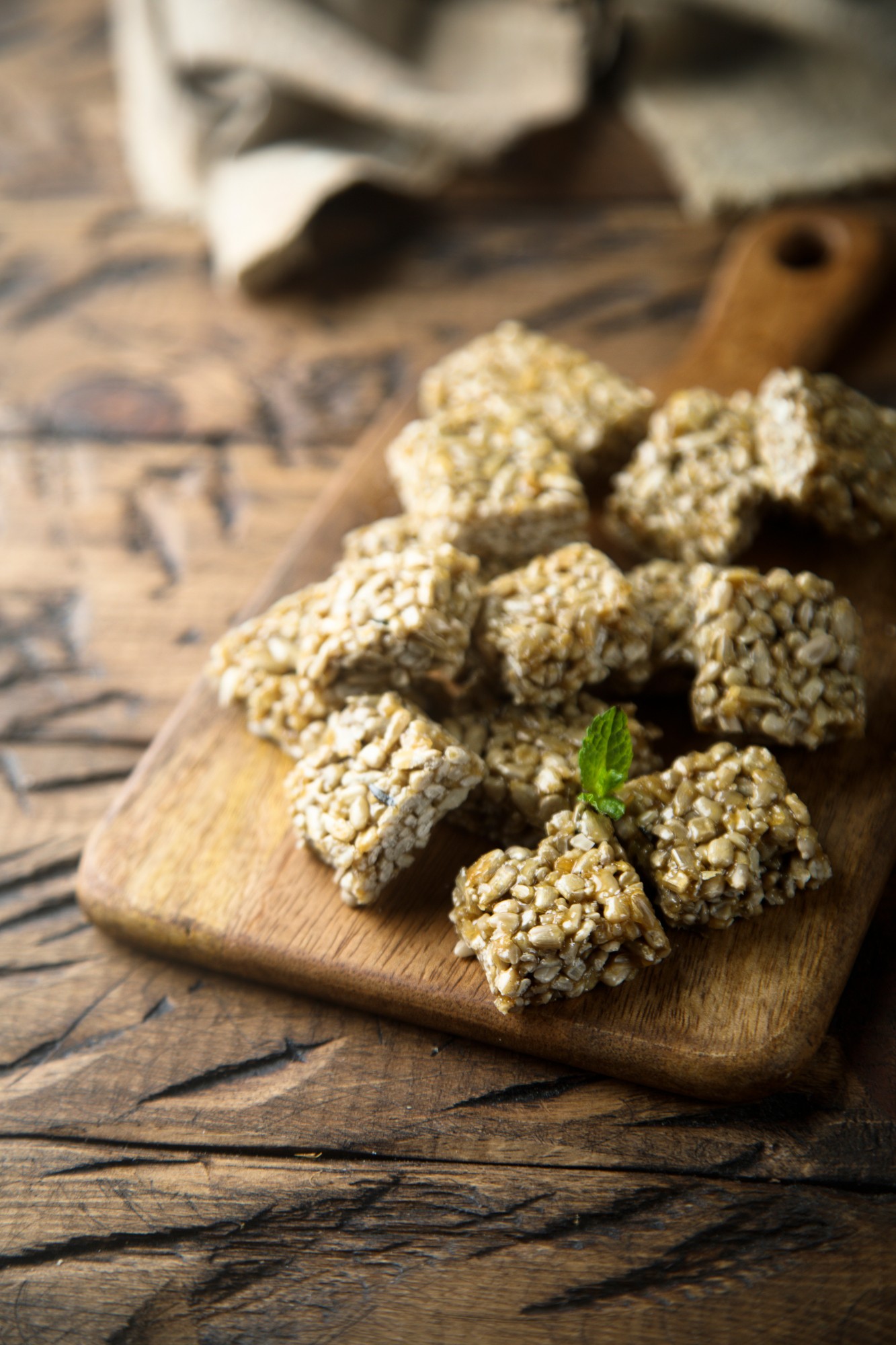The centuries-old Venetian occupation, from 1386 to 1797 left a strong mark on Zakynthos’ traditional cuisine, which is chiefly based around intense seasonings such as garlic and vinegar, and often a thick tomato sauce.
The island continues to produce a wide range of products of excellent quality such as olive oil, cheese, wine, and vegetables, which help retain the authenticity of original, age-old ingredients and their tastes in today’s gastronomy.
Typical Zakynthos dishes are “skordostoubi” aubergines’ (made from garlic and vinegar combined with a thick tomato sauce), garlicky rabbit in an oil-oregano sauce, spleen, pork belly, chicken stuffed with tangy local ladotyri cheese, a very thick egg-lemon sauce (called “manestra”), made with the broth of three or four different meats and sprinkled with cheese, the “sgatzeta” (lamb intestines) braised or fried in oil, the veal “sartsa” (braised with sauce), “stifado” stew made not with shallots, as it’s made according to the traditional Greek recipe, but with garlic and spices.
A recipe of purely rural origin is “Riganada”(rusks drizzled with olive oil and oregano) or “frysses” rusks that are lightly soaked in water and olive oil and covered with grated, fresh tomatoes, capers and oregano.
The island’s expansive olive groves (of the Koroneiki variety) produce excellent (PDO) olive oil, and the Zakynthian raisins (PDO), also famously tasty. Both are added to “glaounes”, a kind of small rusk.
The island’s cheeses are particularly delicious. The most popular is the tangy and spicy Ladotyri, or the “local”, as they call it, which is made from sheep and goat’s milk and matured in Zakynthian olive oil. Before being stored in the oil the ladotyri is placed on wooden shelves “tavles” to mature, which is why it’s called “tavla” cheese. Finally there’s the “prenza”, a fresh, peppery cheese (also made in Kefalonia.
Among the local variety of breads, “grinias”, an aromatic, dark and heavy sourdough bread, and a fluffy seven-yeast bread with chickpea sourdough are still made in some bakeries today. As is the “kouloura”, a Christmas bread that is filled with nuts and dried fruit.
Zakynthos’ typical sweets have a Venetian stamp: the “Mandolato” is made with egg whites, honey and almonds, “Fitoura”, the island’s street food, is like the creamy semolina filling of a “galaktoboureko” milk pie that’s fried into a pancake and Frigania, a creamy dessert in three layers. Another traditional sweet is the pasteli, made with sesame seeds, honey, almonds and cinnamon.
Since the end of 2010, the Zakynthos’ abundant vineyard has been producing PGI Zakynthos wines. The island’s most traditional wine is the white Verdea of Zakynthos, which carries the indication “Appellation by tradition” (it is a protected type of wine and not a variety). The wineries also produce wine made from the Augustan red grape, while traditional varieties Pavlo, Skiadopoulos and Robola are also cultivated and either included in the production of wines or produced as single-variety wines such as the Robola.
Read also:
5 Local Products to take Home from the Ionian Island of Zakynthos
5 tavernas in Zakynthos you’ll never forget
Discover Zakynthos: The beautiful, green island of the Ionian Sea



